News Archive
Filter By
- Abyssinian ground hornbill
- Addax
- Aldabra tortoise
- Allen's swamp monkey
- Alpaca
- American alligator
- American avocet
- American bison
- American flamingo
- American wigeon
- Andean bear
- Aquatic caecilian
- Arapaima
- Asian elephant
- Asian small-clawed otter
- Asian water dragon
- Australian snake-necked turtle
- Bald eagle
- Baltimore oriole
- Barred owl
- Bearded emperor tamarin
- Beaver
- Bennett's wallaby
- Binturong
- Black-and-white ruffed lemur
- Black-crowned night heron
- Black-footed ferret
- Black-tailed prairie dog
- Black-throated blue warbler
- Blue-billed curassow
- Blue crane
- Bobcat
- Brown pelican
- Bufflehead
- California sea lion
- Canvasback
- Cedar waxwing
- Channel catfish
- Cheetah
- Chicken
- Chinese alligator
- Chinese three-striped box turtle
- Clouded leopard
- Collared brown lemur
- Common raven
- Common yellowthroat
- Corals and sea anemones (anthozoa)
- Cow
- Crocodile monitor
- Cuban crocodile
- Dama gazelle
- Degu
- Dunlin
- Eastern corn snake
- Eastern indigo snake
- Eastern newt
- Eastern red-backed salamander
- Eastern screech-owl
- Eld's deer
- Electric eel
- Emperor newt
- Fennec fox
- Fishing cat
- Gaboon viper
- Geoffroy's marmoset
- Gharial
- Giant leaf-tailed gecko
- Giant panda
- Goat
- Golden-headed lion tamarin
- Golden lion tamarin
- Gray seal
- Gray wolf
- Green tree python
- Grevy's zebra
- Guam kingfisher (sihek)
- Guam rail (ko’ko’)
- Guinea pig
- Harbor seal
- Hartmann's mountain zebra
- Hawk-headed parrot
- Hellbender
- Home's hinge-back tortoise
- Hooded crane
- Iranian fat-tailed gecko
- Japanese giant salamander
- King vulture
- Komodo dragon
- Kori bustard
- Kunekune pig
- Land hermit crab
- Larger Malay mouse-deer
- Lemur leaf frog
- Lesser hedgehog tenrec
- Lesser kudu
- Lion
- Loggerhead shrike
- Long-tailed chinchilla
- Long-tailed salamander
- Maned wolf
- Meerkat
- Miniature donkey
- Naked mole-rat
- North American porcupine
- North American river otter
- Northern Luzon giant cloud rat
- Northern pine snake
- Northern pintail
- Northern red salamander
- Northern snakehead fish
- Northern tree shrew
- North Island brown kiwi
- Norway rat
- Orangutan
- Orchard oriole
- Ossabaw Island hog
- Ostrich
- Ovenbird
- Pallas's cat
- Panamanian golden frog
- Patagonian mara
- Persian onager
- Philippine crocodile
- Prehensile-tailed porcupine
- Prevost's squirrel
- Przewalski's horse
- Pygmy slow loris
- Red-crowned crane
- Red-fronted lemur
- Red-rumped agouti
- Red-winged blackbird
- Red knot
- Red panda
- Red River hog
- Red ruffed lemur
- Red wolf
- Ring-tailed lemur
- Ruddy duck
- Schmidt's red-tailed monkey
- Scimitar-horned oryx
- Screaming hairy armadillo
- Semipalmated plover
- Semipalmated sandpiper
- Siamang
- Sitatunga
- Sloth bear
- Southern lesser galago
- Southern swamp sparrow
- Southern tamandua
- Spider tortoise
- Striped skunk
- Tanagers
- Tentacled snake
- Tiger
- Titi monkey
- Turkey
- Twig catfish
- Two-toed sloth
- Vietnamese mossy frog
- Virginia opossum
- Von der Decken's hornbill
- Western lowland gorilla
- White-cheeked gibbon
- White-faced saki
- White-naped crane
- White-nosed coati
- Whooping crane
Displaying 776 - 800 of 2363 articles.
Citizen Scientists Discover Endangered Orchid in Virginia
Local citizen scientists working with the Changing Landscapes Initiative and Virginia Working Landscapes, both programs of the Smithsonian Conservation Biology Institute (SCBI), discovered a rare orchid that is nearly extinct in the commonwealth of Virginia.
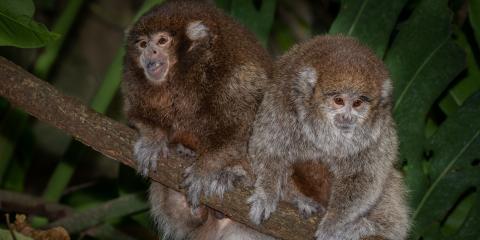
Featured Creature: Titi Monkeys
Meet Henderson and Kingston—two white-eared titi monkeys that live in Amazonia’s rainforest habitat! Get to know them in this Q&A with animal keeper Donna Stockton.

New at the Zoo: Home’s Hinge-back Tortoises
Three new Home’s hinge-back tortoises recently made their debut at the Reptile Discovery Center! Get the scoop on these totally awesome tortoises from animal keeper Sara Hasenstab.

The Birds Are Back in Town
All seasons on the prairie are special. But spring is just a little more special than the rest, as every day birds return for summer breeding season.
Kirtland’s Warbler No Longer Needs Protection from Brown-Headed Cowbird in Michigan
For the past 40 years, brown-headed cowbirds have been trapped and killed in Michigan to prevent them from laying eggs in endangered Kirtland’s warbler nests—causing warbler parents to care for cowbird chicks instead of their own chicks.
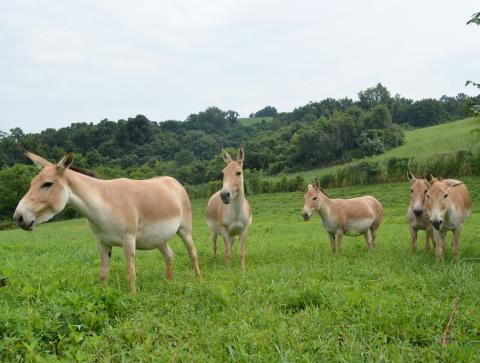
Goings on With the Onagers
Persian onagers are an amazing species! And even though they are not one of the iconic species that you may know, as someone who gets to care for them and spend time with them every day, let me tell you just how amazing they are.
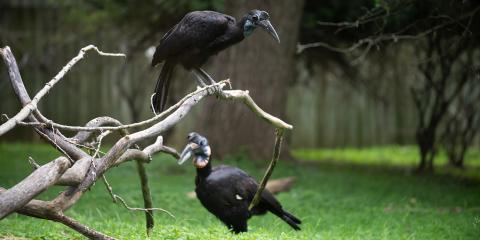
When Karl Met Karoline
This summer, Abyssinian ground hornbill Karl got a new roommate — a hornbill named Karoline! The pair met in June, but their story really began two years ago when keepers decided to build Karl a new beak.
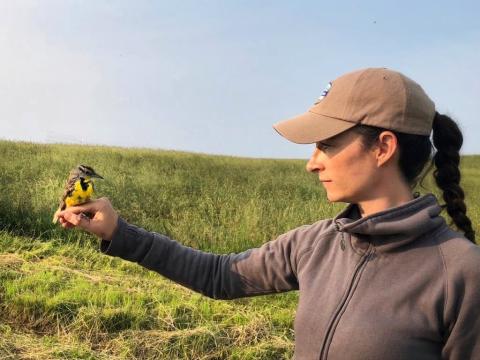
Monitoring Meadowlark Movements
At first glance, Virginia’s farmlands seem quite peaceful. But beneath the swaying fields of hay lies a bustling ecosystem for the birds that call the grasslands home. One such avian animal—the eastern meadowlark—is key to the health of its habitat.
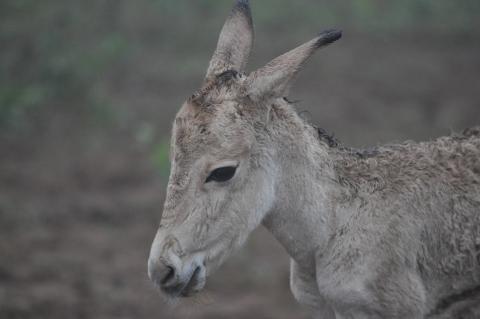
Featured Creature: Persian Onager
Excitement is in the air at the Smithsonian Conservation Biology Institute in Front Royal, Virginia, where hoofstock keepers are eagerly anticipating the births of three Persian onagers! Get to know this rare and endangered species in this Q&A with supervisory biologist Dolores Reed.

SCBI Scientist Kristina Anderson-Teixeira Receives Presidential Early Career Award for Scientists and Engineers
Kristina Anderson-Teixeira—a forest ecologist at the Smithsonian Conservation Biology Institute’s (SCBI) Conservation Ecology Center and at the Smithsonian Tropical Research Institute’s Center for Tropical Forest Science—is a recipient of the Presidential Early Career Award for Scientists and...
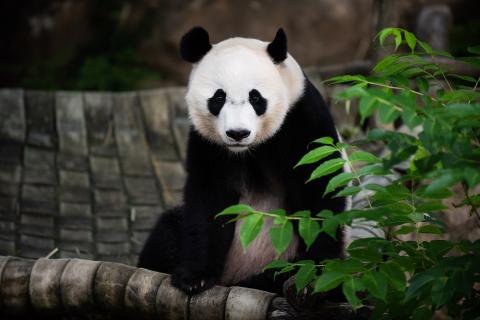
Bei Bei is Recovering From A Bout With Mucous Stools
During the past several weeks, Bei Bei has been experiencing some gastrointestinal discomfort which has caused him to pass several mucous stools and loose stools.
Critically Endangered Scimitar-horned Oryx Calves Born at the Smithsonian Conservation Biology Institute
The Smithsonian Conservation Biology Institute's herd of scimitar-horned oryx is growing. Keepers welcomed five calves during the past few weeks.
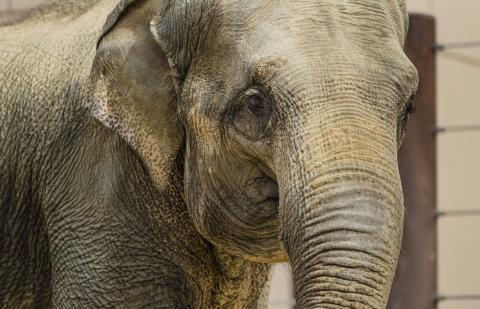
Happy Birthday, Maharani!
Female Asian elephant Maharani is turning 29 years old Sunday, July 14, and we are celebrating with her favorite thing—food!
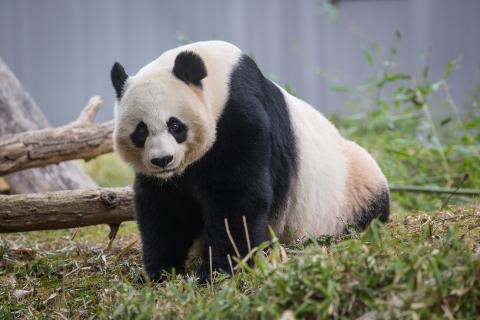
Mei Xiang Update: July 2019
Keepers are still waiting to find out if giant panda Mei Xiang is pregnant. She has not started exhibiting many behaviors associated with the secondary hormone rise of a pregnancy or pseudopregnancy.
Asian Water Dragon Dies at Smithsonian’s National Zoo
A 2-year-old female Asian water dragon who was the first documented birth by facultative parthenogenesis in her species died from blood cancer.
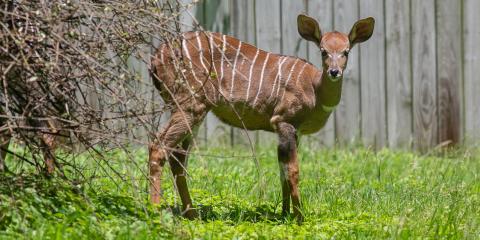
Keeping Up With Kushukuru the Kudu
As his name suggests, Zoo staff are “grateful” for 5-month-old male lesser kudu, Kushukuru! He was born Jan. 12, 2019, to 5-year-old first time mother Rogue and 8-year-old father Garrett.
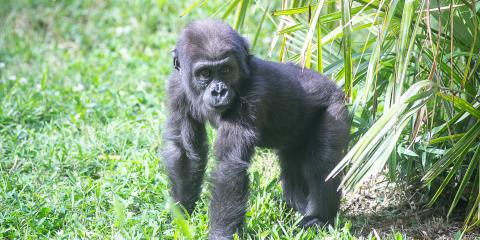
#GorillaStory: Moke Is Becoming More Bold
Western lowland gorilla infant Moke is becoming bolder, and with his growing confidence, we are beginning to see traces of his mom’s personality, says assistant curator Becky Malinsky.
Tracking Tapirs: An Expedition in Ecuador
Why is this mountain tapir wearing a collar? His movements and behaviors are being tracked via satellite by Smithsonian scientists!
Male African Lions in Human Care Hit Puberty Earlier Than in the Wild
Lion cubs grow up fast, and even faster in zoos. In a long-term study, scientists at SCBI found that male African lions living in human care hit puberty a full year earlier than their counterparts in the wild.

The Zoopendous Summer Interns’ Guide to D.C.
Make the most of your time out of the office with a visit to the Smithsonian’s National Zoo!
Sea Lion Pup Born at Smithsonian’s National Zoo
A new set of flippers splashed down at Smithsonian’s National Zoo, where American Trail keepers are celebrating the arrival of a California sea lion pup. Animal care staff are closely monitoring the pup—born June 23—in an off-exhibit area.
Endangered Red Panda Cub Born at the Smithsonian Conservation Biology Institute
Moonlight, a 4-year-old red panda, gave birth to a cub overnight June 12 at the Smithsonian Conservation Biology Institute in Front Royal, Virginia. Moonlight and the cub appear to be doing well and keepers are cautiously optimistic that the cub will continue to grow.

Summer 2019 Guide to Beating the Heat at the Zoo
Visitors to Washington, D.C., can expect warm weather and humidity this season. But not to worry — we’ve rounded up a few of the best ways to beat the heat at the Zoo this summer.

Evolution Fast Track: Otter Genetic History Provides Clues for Future Recovery
The study, which is among the first genomic studies on otters, found that both the sea otter and giant otter have lost a considerable number of genes related to the sense of smell — a faculty that is not essential underwater.
Keepers Help Vulnerable Hooded Crane Hatch at the Smithsonian Conservation Biology Institute
A small beak broke through one of the hooded crane eggs at the Smithsonian Conservation Biology Institute (SCBI) in Front Royal, Virginia, June 12.
